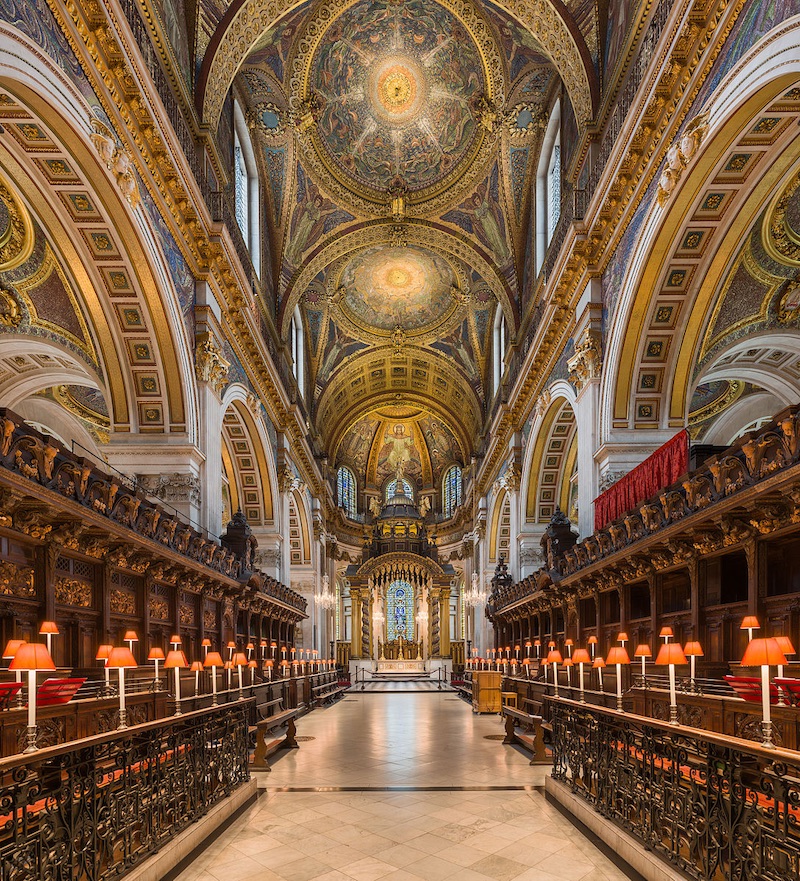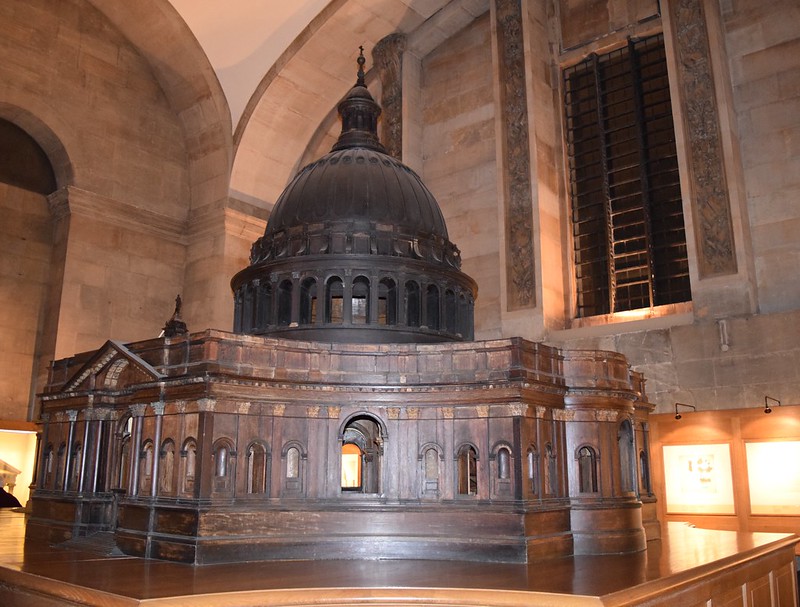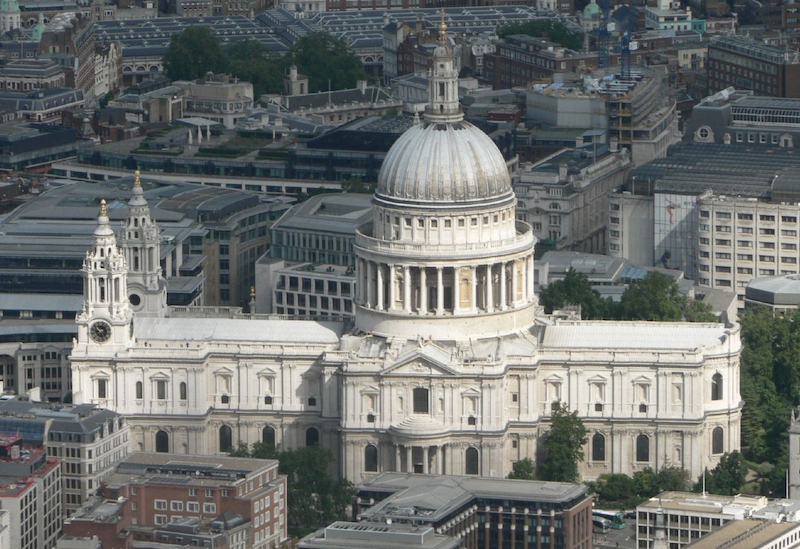London, United Kingdom. Center of the English speaking world for centuries and home to some of the greatest architectural feats on earth.
St. Paul’s Cathedral. An international architectural icon known by much of Earth. The seeming architectural equivalent of the Queen of England herself — at once elegant, imposing, and timeless.

Let us take a moment to examine how this came to be
At the time St. Paul’s Cathedral was constructed, anybody could call themselves an architect — and so most builders did — even though the title had a connotation of great design. Over time it has been only the true great architects who are revered in the field, as their work makes the point for them — not licenses or laws or any form of arbitrary and forceful measure. In other words, the finished product speaks for itself.
The fundamental truth is that the architect was never meant to be separate from the builder. The title of “Architect” simply means the top builder.
St. Paul’s visual majesty has been captured and immortalized the world over through photographs, cinema, and literature — to say nothing of the millions of worshipers who’ve passed through its doors since Old St. Paul’s was consecrated in 1240.
Old St. Paul’s Gothic Arches were constructed of wood — not of stone — and so the roof collapsed in the The Great Fire of London (on September of 1666 the Great Fire of London destroyed 13,000 English homes and 87 churches).
Had the initial design to St. Paul’s been stone, the damage to the magnificent structure would have been significantly less. At this point the cathedral could possibly have been repaired, but a design was made to rebuild St. Paul’s cathedral from the ground up in a modern style. Ultimately the entire structure was demolished in 1670.
Enter Sir Christopher Wren
As celebrated figure on the architectural and Design-Build stage of history as one could possibly be, Sir Christopher Wren was similar to a 17th century equivalent of Elon Musk, with the looks and distinguished grace of Sir David Beckham. A unique package of creativity, brilliance, and refined competence.
The redesign of St. Paul’s was officially tasked to Sir Christopher Wren on the 30th of July, 1669. Wren was an accomplished Architect of the era responsible for the design of 53 London churches. He additionally founded the Royal Society and was its President for several years from 1680-82, gaining a clear reputation as the greatest English Architect of his era. He was Knighted in 1673 at the age of 41.
At the time he was charged with the redesign of St. Paul’s, Wren was engaged in his classic work, Five Tracts on Architecture.
Wren’s mandate from Dean Willian Sancroft and others concerning St. Paul’s was to design and bring into being a structure as “handsome and noble to all the ends of it and to the reputation of the City and the nation.”
Essentially, create a structure without peer in the then leading nation of the world.
Christpher Wren and Design-Build
Wren was clearly the right man for the job. He did the project Design-Build, as this was the manner of the day. The way in which projects of this scope, splendor, and importance were envisioned, designed, and carried forward into reality.
A separate “General Contractor” did not exist at the time and so as was customary, Wren embraced accountability — selecting and contracting the ‘master’ for each trade, then coordinating their work on-site amongst each other and deciding on changes if any issues arose. In addition to plans and specifications, Wren used models as a design tool and a means to gain approval from clients and to help trade craftsmen with their execution.

Source: https://www.flickr.com/photos/nationalchurchestrust/24717030761/
On the site, trade ‘Masters’ would Design-Build their individual craft — submitting detailed “shop” drawings to Wren based on his plans and models. He would review, adjust, and then copy them to a larger scale, making it easier for the work men to use.
Wren’s tombstone is testament to his actual competence in Design-Build:
“Underneath lies buried Christopher Wren, the builder of this church and city; who lived beyond the age of ninety years, not for himself, but for the public good. If you seek his memorial, look about you.”
Wren was in fact a master builder who led the entire Design-Build field. A master of masters who was known for his competence in creating structures without peer in beauty, elegance, and practical composition. Design was part of Wren’s talents, but he was in truth a Master Builder.
Labelling Wren an “architect” is woefully incomplete, as the definition has changed since his time to designate solely a designer. A short-sell on one of the most brilliant individuals this world has yet seen. A bit like calling Thomas Jefferson a writer or Steve Jobs a computer guy.
In 1669, Charles the 2nd, the King of England commissioned Wren to direct the reconstruction of all government buildings — known at the time as the Royal Works.

Source: https://commons.wikimedia.org/wiki/File:St_Pauls_aerial_(cropped).jpg
Other notable and prolific buildings of Wren include:
- 1670-1683: St. Mary Le Bow, at Cheapside, London, UK
- 1671-1677: Monument to the Great Fire of London, with Robert Hooke
- 1671-1681: St. Nicholas Cole Abbey, London
- 1672-1687: St. Stephen’s Walbrook, London
- 1674-1687: St. James, at Picadilly, London
- 1675-1676: Royal Observatory, Greenwich, UK
- 1675-1710: Saint Paul’s Cathedral, London
- 1677: Rebuilt St. Lawrence Jewry, London
- 1680: St. Clement Danes, at Strand, London
- 1682: Christ Church College Bell Tower, Oxford, UK
- 1695: Royal Hospital Chelsea, with John Soane
- 1696-1715: Greenwich Hospital, Greenwich, UK
St. Paul’s has carried forth the aesthetic legacy in which Wren created it. The shot of St. Paul’s titled “St. Paul’s Survives” was taken on 29 December 1940, and poignantly shows the beautiful cathedral wreathed in smoke during the Nazi Blitz of London. A meaningful triumph of beauty and strength through oppression.
On July 29th, 1981, Princess Diana and Prince Charles were wed in this magnificent building.
Doctor Martin Luther King Jr. visited in 1964, and Winston Churchill’s funeral was held at St. Paul’s in 1965. As of late, HM Queen Elizbeth II, former PM David Cameron, Kate Middleton, Prince William, and Prince Harry attended a commemoration service in St. Paul’s for all who died and served in the military campaign in Afghanistan.
Wren’s Design-Build legacy clearly lives on, continuing to touch lives each day in the present and for future generations to come.
Dave

References:
https://en.wikipedia.org/wiki/St_Paul%27s_Cathedral
https://www.britannica.com/biography/Christopher-Wren
https://www.thoughtco.com/sir-christopher-wren-rebuilder-of-london-177429
https://www.stpauls.co.uk/history-collections/history/history-highlights
https://www.telegraph.co.uk/news/11469391/Kate-Middleton-Prince-William-and-Prince-Harry-join-The-Queen-to-pay-tribute-to-Afghanistan-fallen.html
The Architect in History, by Martin S. Briggs – 1927
Comments are closed here.